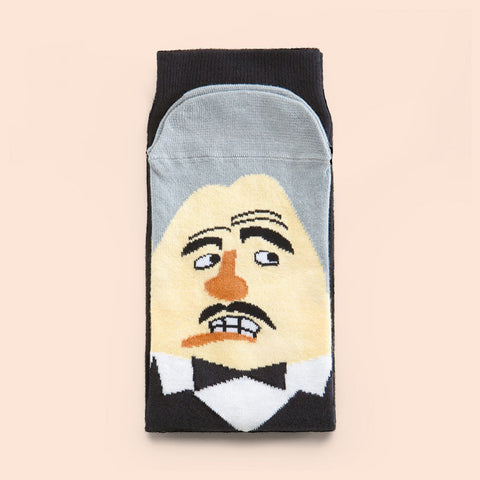Here at ChattyFeet we love a good pun. You may have noticed one or two ever-so-subtle wordplays in our sock character descriptions. Well, we think puns are such a hoot so we try to sneak a cheeky pun or twit-twoo into our content whenever we can; feather or not it makes any sense, we’owl give it a try.
Let’s take a closer look at the humble pun and learn a little more about where they came from and how to know when you’ve found a good one…
We jest love to make you laugh whenever possible, but for some people puns are just groan-inducing. Why is it that puns make some people laugh out loud and other people shake their heads? In actual fact, it is possible that the groaners are actually enjoying the puns more than the gigglers.

People love to get ‘in jokes’ and puns are a way of doing this. Understanding a joke so well that it triggers a sigh means that you knew that the pun was coming and were ahead of the game. It therefore makes us feel intelligent and ‘above’ the joke, a feeling that we actually quite enjoy! Whether you chuckle or cringe, puns can be enjoyed by everyone.
The source of this type of double-meaning wordplay dates all the way back to the 7th Century in a text about floods. We wonder wet that article was about? Weather it was interesting or noah? Did the writer get in deep trouble for creating a tide of puns? Or did he rain it in?
Did you know that almost every language uses puns? Considering that a pun is where a word that sounds the same (but has two or more meanings) is used to humorous effect, there will be countless examples in languages all around the world. The double entendre in French tends to aim for a rather naughty version of the word to make us blush (the customer could see the baker’s buns, for example).
But puns don’t have to be spoken to be understood – visual puns are just as funny. Just take a look at these photos of signs. We read the sign ‘Selfridges’ before we even noticed that the business was actually selling fridges. Relating the pun to the company’s trade works perfectly as a visual joke. And who wouldn’t eat fresh fish by the ‘Codfather?’ It would be a trawl order to come up with a batter fish pun than this. These images are exactly why we wanted to write a blog post-er about puns. And we’re taking this as a sign that puns are here to stay.
Back in the early 1600s William Shakespeare made puns mainstream by using homophones (similar sounding words) in his plays. Audiences would roar with laughter at the wordplay and even his famously tragic characters spoke in puns: “You have dancing shoes with nimble soles; I have a soul of lead” (Romeo). This brought a little light comic relief to his darker plays.
Whether you personally enjoy puns or not we hope to put a little smile on your face as you read about our ChattyFeet characters. We’re only trying to im-princess you with our Kate Middle-Toe puns; we hope you think they’re royally good and we’ve throne in as many as possible. You have to admit; puns are heir to stay, and can be enjoyed day or knight.
We giggled when Colin Hanks, Tom Hanks’ son, started a business called Hanks Kerchiefs—a clever play on words that perfectly combines his last name with the product he’s selling, making it a prime example of how a good pun can turn heads and spark smiles.

And now that we know even the head-shakers are secretly enjoying a pun we won’t be insalted if you groan, we’ll just take it as a condiment.
ChattyFeet socks cheer you up with funny illustrated characters. Inspired by authors, artists, musicians and more, they make a great gifts for friends. Browse our collection of fun socks for men and cool socks for women.















